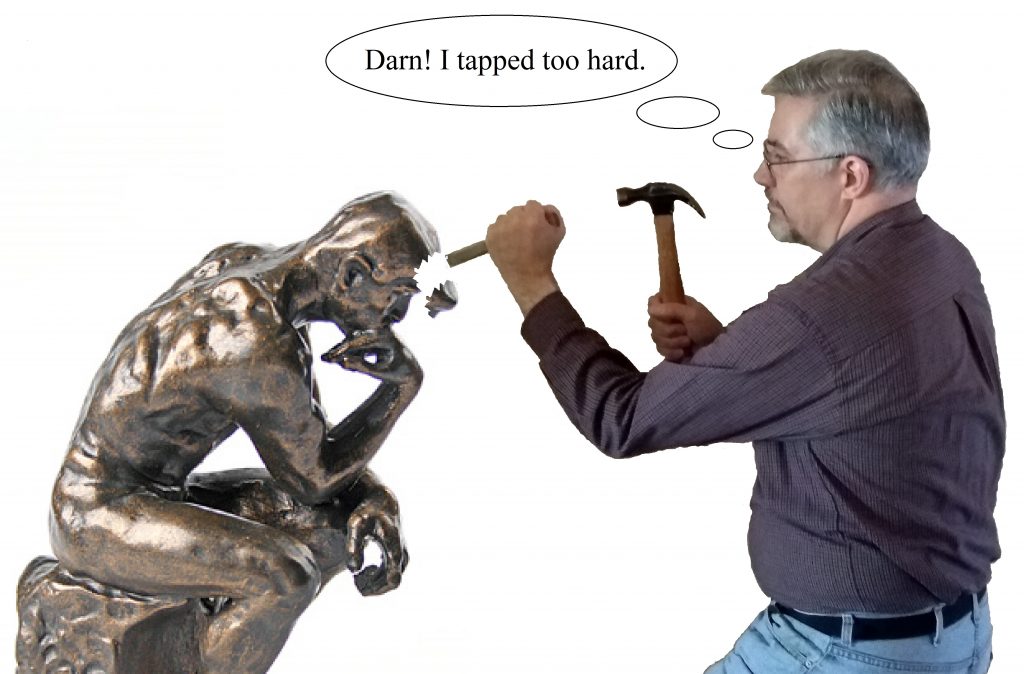You finished that first draft of your story. Whew! What’s next? Most likely, you’ll need to work on second and subsequent drafts, like a sculptor smoothing and texturing a statue. How do you do that?

In a previous post, I recommended you create a personal editing list. It should contain things you want to check in each story as part of your editing process.
Why is it a personal editing list? Every writer has different strengths and weaknesses. Your editing list should focus on your known weaknesses, while ensuring your strengths remain strong.
How do you find out about these weaknesses? You consult people you trust (including yourself). These people can include other writers in your critique group, Beta Readers, and editors of previous stories. You may also include weaknesses noted by those who commented online about your previous stories, especially when you agree with the comments.
Obviously, as you keep writing and getting more comments on more stories, your editing list will change. It’s not only personal, it’s flexible.
For those just beginning, I’ll propose a starter list. Add items as you discover your weaknesses, and delete (or disregard) items that haven’t been a problem for you.
- Overall Aspects. Who is the protagonist? What is the protagonist’s problem? Does the story pass the ‘so what?’ test? How would I briefly answer the question: What is this story about?
- Point of View. Have I chosen the right POV for the story? If other than Omniscient, have I selected the right character(s) to narrate it? When I change the POV, are the transitions clear?
- Characters. Are my characters compelling? Why should readers care about them? Are my characters too stereotyped, and if so, what can I do to correct that? Have I conveyed the thoughts and feelings of the POV character?
- Beginning. Does the first sentence, or at least the first paragraph, hook the reader? Does the beginning hint at the problem, convey the tone of the story, and include the protagonist? Does the story’s beginning foreshadow the ending without giving it away?
- Plot. Does the plot convey the protagonist’s efforts to solve the problem? As the plot proceeds, do I build and release tension effectively? Is the story suspenseful? Do all the events and all the narration in the story advance the plot, or have I gone down rabbit holes?
- Ending. Does the ending include a resolution to the problem? Is the ending too predictable? Does the ending go on too long after problem resolution?
- Setting and Description. Is the setting clear from the start? Have I included too many details or too few? Have I grouped the setting details into an info-dump, and if so, can I sprinkle them throughout? Do my descriptions appeal to all five senses?
- Dialogue. Is my dialogue appropriate and realistic? Have I conveyed a language accent with too many misspelled words? Does each major character have a distinctive (and contrasting) manner of talking, and vocabulary? Have I used dialogue tags effectively?
- Show, Don’t Tell. For the key plot points, do I show rather than tell? Do I convey emotions, feelings, and impacts of events on characters? Do I merely relate events through narration? Do my characters react to events and actions appropriately?
- Style. Have I strengthened the prose with similes and metaphors? Are there adverbs I can cut out? Have I used active phrasing? Can I choose verbs that are more powerful? Are there clichés I can delete or modify? Do I vary my sentence lengths enough? Is my vocabulary appropriate and consistent?
- Spelling and Grammar. Have I corrected all unintentional misspellings? Is my grammar correct? Do I still have any awkward sentence structures? Do I have any misplaced modifiers?
There’s your starter list. Happy editing! Now it’s time for me to chip away at the next masterpiece by—
Poseidon’s Scribe
